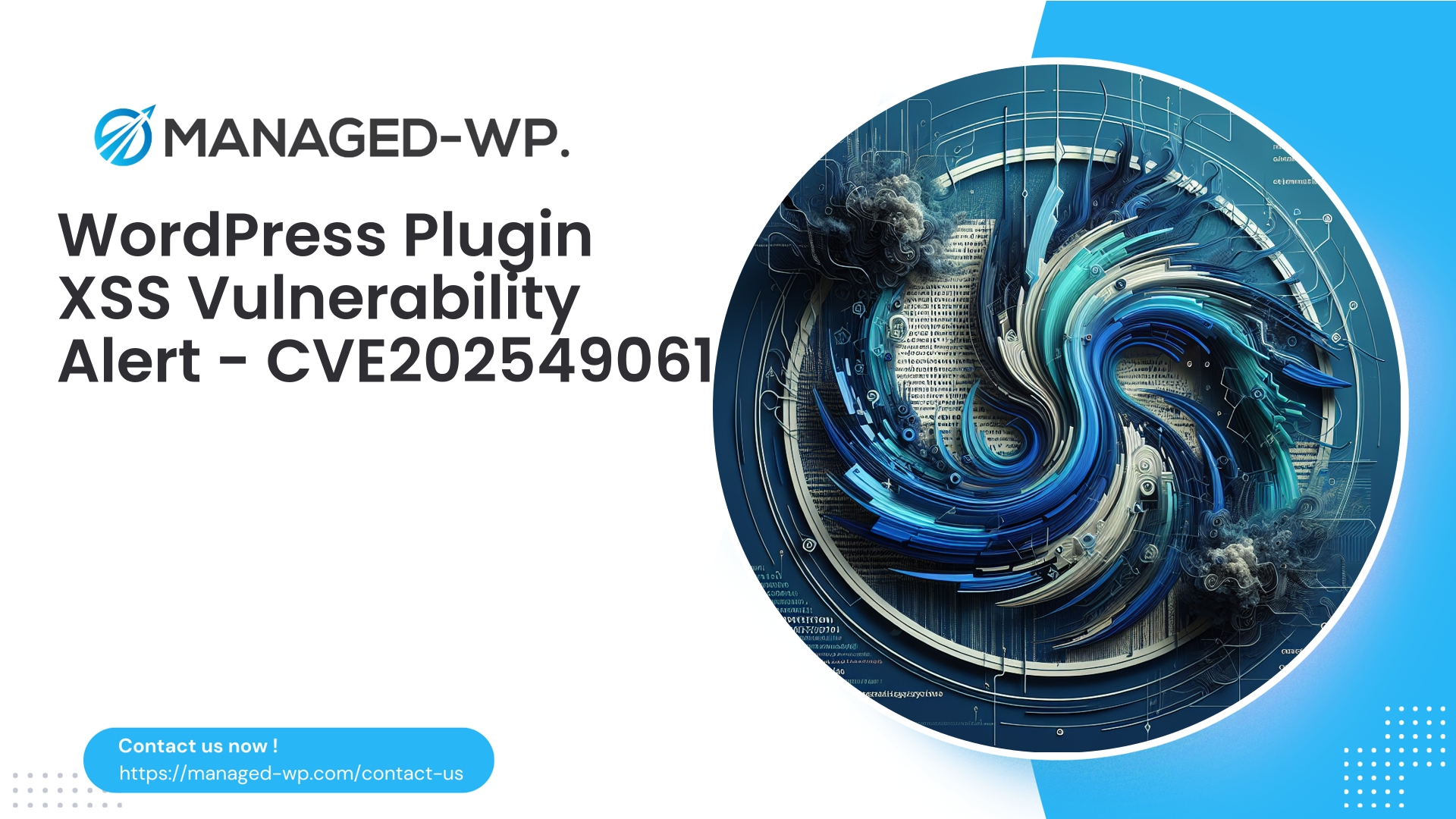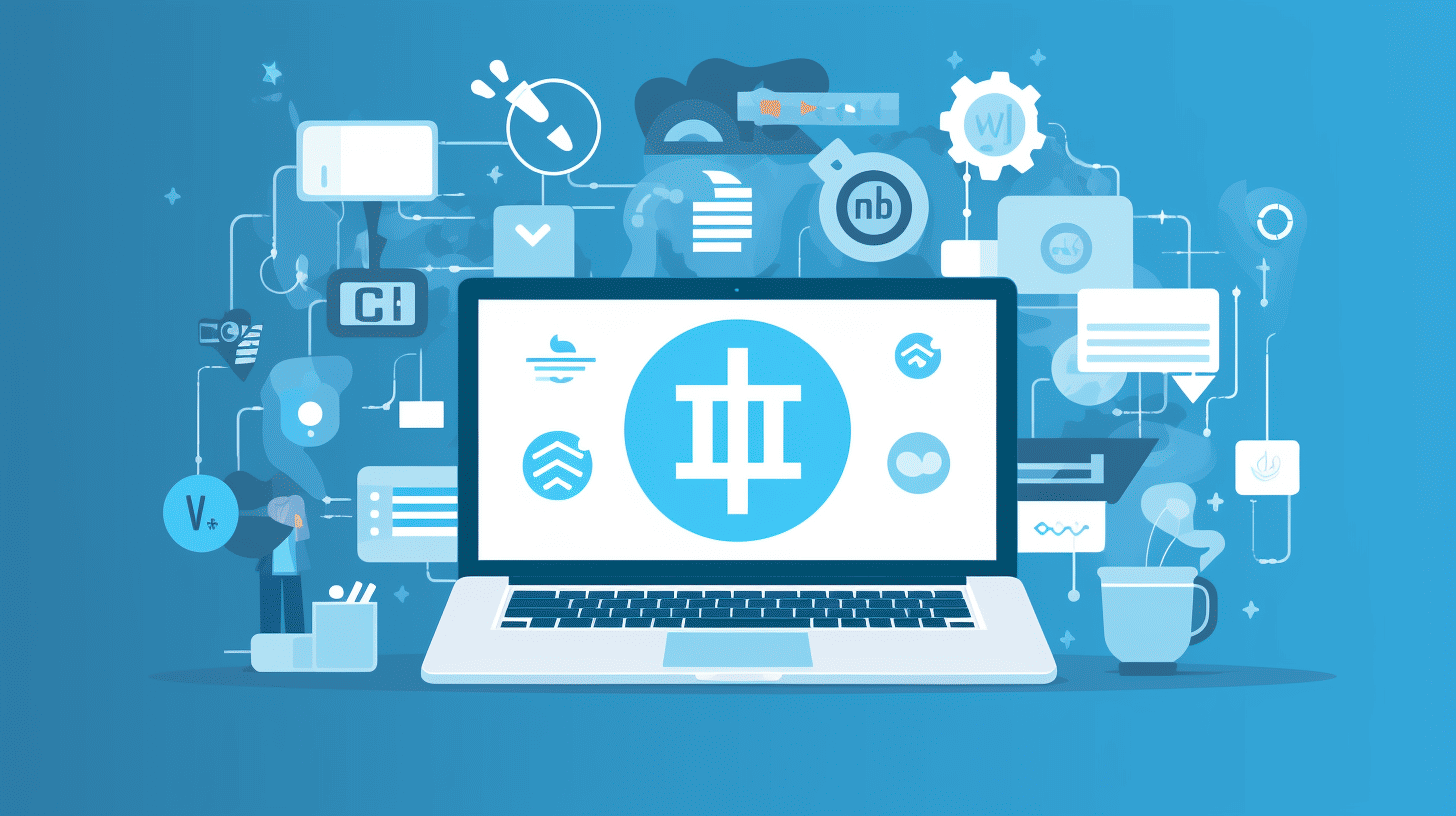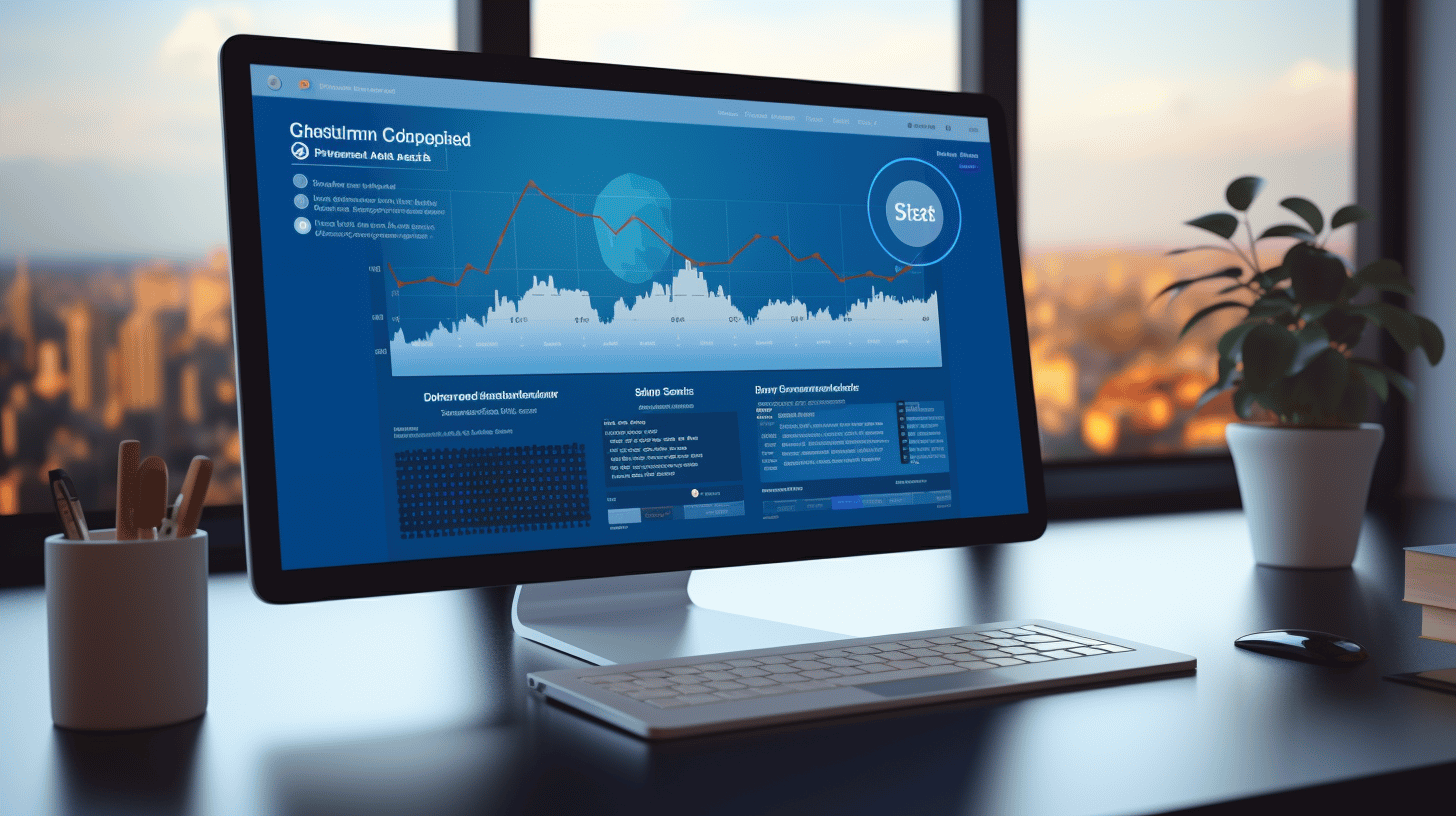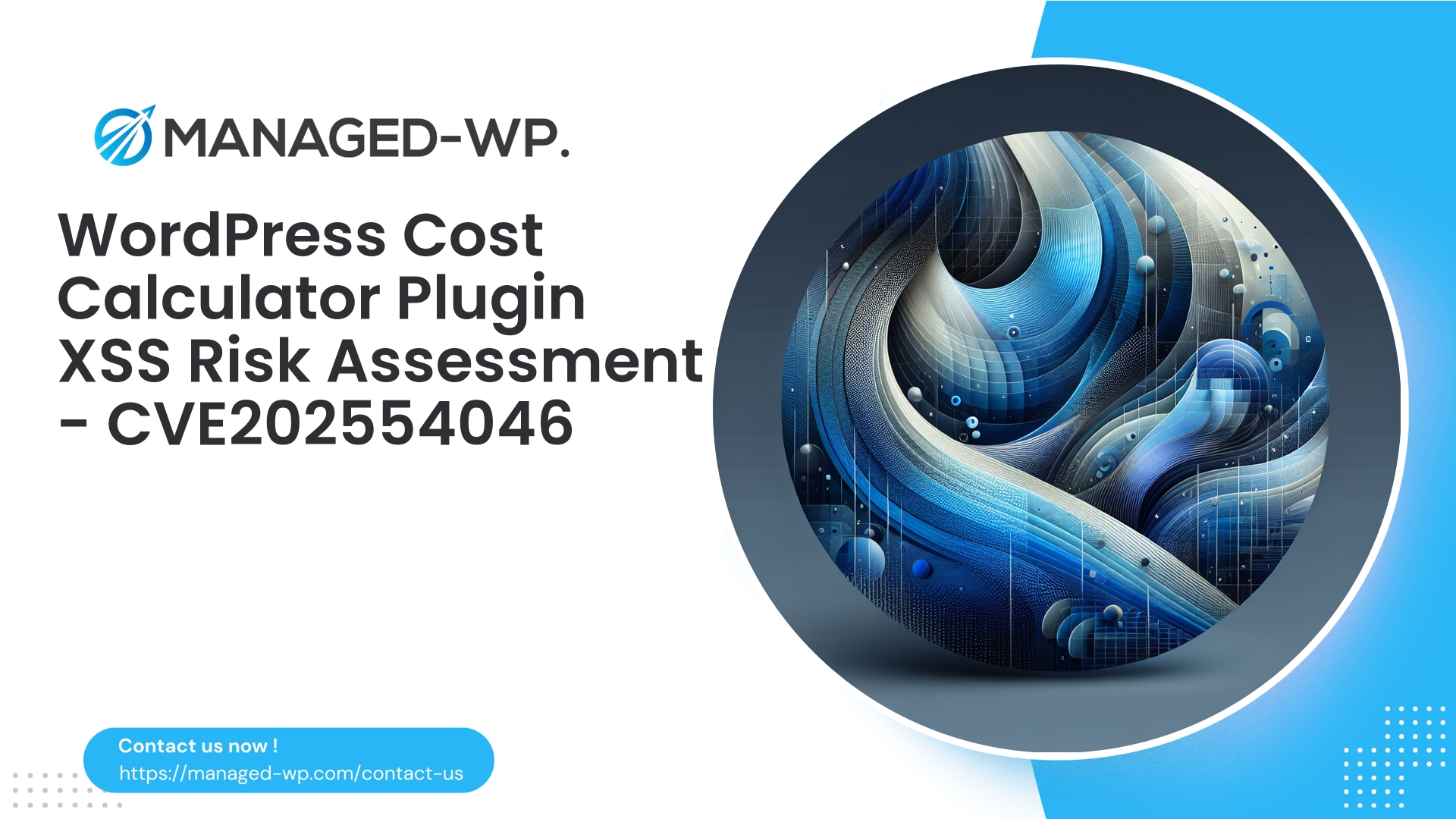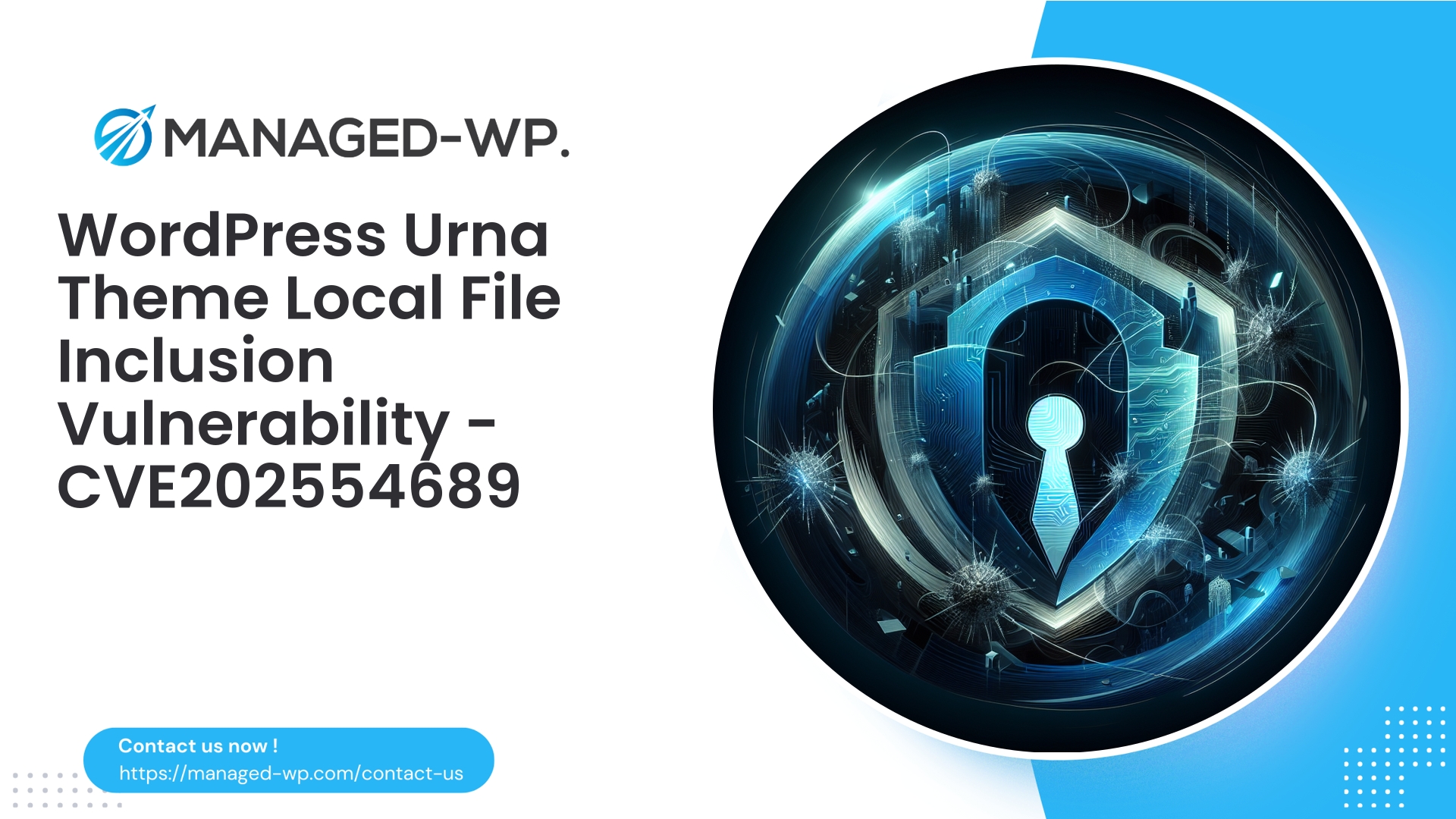| Plugin Name | WordPress Porn Videos Embed |
|---|---|
| Type of Vulnerability | Cross-Site Scripting (XSS) |
| CVE Number | CVE-2025-49061 |
| Urgency | High |
| CVE Publish Date | 2025-08-06 |
| Source URL | CVE-2025-49061 |
Critical Security Advisory: Cross-Site Scripting Flaw in WordPress Plugin ‘Porn Videos Embed’ (Versions ≤ 0.9.1)
As trusted experts in WordPress security, Managed-WP urges all site owners and administrators to remain alert in light of a recently disclosed Cross-Site Scripting (XSS) vulnerability impacting the Porn Videos Embed plugin, versions up to and including 0.9.1. Although this plugin serves a specialized niche, the severity and implications of this vulnerability demand immediate attention to prevent potential exploitation.
In this update, we break down the risks associated with this vulnerability, explain how it operates, and provide expert guidance on the necessary protective measures to safeguard your WordPress environment.
Cross-Site Scripting (XSS): A Primer on Its Threat to Your Website
XSS vulnerabilities enable attackers to inject malicious client-side scripts into websites, which are then executed by unsuspecting users’ browsers. Such exploits can lead to serious consequences including credential theft, session hijacking, unsolicited redirects, and the distribution of malware.
Why WordPress Sites Are Particularly Vulnerable
With WordPress powering nearly half of the internet’s websites, attackers actively seek plugin vulnerabilities as gateways into target sites. An XSS flaw in any widely-used plugin provides a conduit for attackers to undermine both user safety and site credibility.
The Porn Videos Embed Vulnerability Overview
- Affected Plugin: Porn Videos Embed
- Vulnerable Versions: 0.9.1 and earlier
- Vulnerability Type: Stored or Reflected Cross-Site Scripting (XSS)
- CVSS Score: 6.5 (Moderate severity rating)
- Patch Status: No official fix currently available
- Last Plugin Update: Over one year ago, suggesting abandonment
- Exploit Requirements: Attacker with contributor-level access
Assessing the Real-World Risk
The moderate CVSS rating does not diminish the practical dangers this vulnerability introduces, which include:
- Malicious Code Injection: Scripts crafted by attackers can hijack sessions, steal cookies, or silently redirect visitors.
- Degraded Site Reputation: Search engines flagging malicious activity can lead to blacklisting and traffic loss.
- Data Breaches: Stealing sensitive visitor information and user credentials is a major risk.
- Automated Attacks Amplified by Abandonment: Unpatched and unmaintained plugins are prime targets for mass exploitation.
- Contributor-Level Access Exploit: Lower privilege requirements widen potential attack surfaces.
How This XSS Vulnerability Operates
At its core, this vulnerability arises from inadequate sanitization of user input submitted via the plugin’s interface accessible to contributors. Attackers with sufficient permissions can insert malicious JavaScript or HTML, which subsequently executes when other users access the infected pages.
This scenario increases risk because contributor roles—commonly granted to users who can submit posts or content—do not require administrative privileges, expanding the pool of potential threat actors.
Possible malicious outcomes include:
- Injection of disruptive or malicious advertisements
- Unauthorized redirects to harmful external sites
- Compromise of visitor and user data
- Incorporation into complex multi-stage attacks
Absence of Official Fix: What This Means for Your Site
The lack of an official patch places site owners in a challenging position:
- Ongoing use of the plugin post-disclosure means continuous exposure
- Deactivation stops plugin functionality but may not eliminate residual risks if data or remnants persist
- No automated updates result in no safety buffer against emerging exploits
Managed-WP strongly recommends immediate evaluation and intervention to mitigate potential threats.
Recommended Immediate Actions for WordPress Site Owners
1. Audit Your Plugin Usage
- Verify if the Porn Videos Embed plugin is installed, particularly vulnerable versions 0.9.1 or lower.
- Review contributor-level accounts that could exploit this vulnerability.
2. Remove or Replace the Plugin
Since this plugin is likely abandoned, removing it entirely is the safest course. Look for alternatives with active maintenance and security support.
- Plugin deactivation alone is insufficient for security assurance.
- Consider thorough database cleaning to remove any malicious payloads.
3. Implement a Managed Web Application Firewall (WAF)
An effective WordPress-optimized firewall offers virtual patching, shielding your site in real time from exploitation attempts even without code-level patches.
- Protection against OWASP Top 10 injection attacks
- Continuous real-time traffic analysis and threat blocking
- Automated malware detection and threat response
4. Limit Contributor Permissions
Reduce contributor capabilities to the bare minimum necessary, and enforce strict sanitization on user-submitted content to minimize injection risks.
5. Monitor for Anomalies
- Look for unexpected redirects and suspicious advertisements
- Watch for unauthorized content or links appearing on your site
- Pay attention to visitor reports of abnormal site behavior
6. Prepare Incident Response Plans
- Conduct malware scans and remove any discovered threats immediately
- Reset passwords for contributors and above
- Consult professional security services if compromise is suspected
Contextualizing the Persistent Threat of WordPress Plugin Vulnerabilities
WordPress’s vibrant plugin ecosystem is both a strength and a challenge:
- Thousands of plugins exist, but maintenance and security vary greatly
- New vulnerabilities are discovered regularly across this broad landscape
- Abandoned plugins with no support magnify risk exposure
- Attackers quickly automate exploitation of known vulnerabilities
Only a vigilant, multi-layered defense approach mitigates these ongoing threats effectively.
The Value of Virtual Patching When Official Fixes Are Unavailable
Virtual patching intercepts malicious requests targeting known vulnerabilities at the firewall level, protecting your site without modifying plugin code. This approach is crucial in circumstances such as this, where no official fix exists and the plugin appears abandoned.
- Prevents malicious inputs from reaching vulnerable code
- Offers real-time protection against exploitation
- Buys time while planning for plugin replacement or site remediation
Comprehensive WordPress Security Requires Layered Defense
Maintaining your WordPress site’s security extends beyond a single plugin:
- Keep WordPress core, themes, and all plugins updated
- Enforce strong passwords and enable multi-factor authentication (MFA)
- Regular backups and malware scanning protocols
- Deploy a web application firewall with continuous threat intelligence
- Limit user permissions rigorously
- Frequently monitor logs and unusual activity
Adopting this holistic approach is essential to withstand both current and emerging threats.
The Cost of Delayed Action
Threat actors waste no time exploiting disclosed vulnerabilities. Without prompt mitigation, your site risks:
- Automated scanning and exploitation attempts
- Injection of malware, phishing, or cryptomining scripts
- Hijacked user sessions and stolen data
- Damaged brand reputation or blacklisting by search engines
Delay increases exposure and multiplies potential damage.
Quick Reference: Porn Videos Embed XSS Vulnerability Response Checklist
| Action | Priority | Details |
|---|---|---|
| Identify plugin installation | Essential | Check WordPress admin > Plugins page |
| Confirm plugin version | Confirm ≤ 0.9.1 vulnerable versions | Locate version via plugins page or readme.txt |
| Remove or replace plugin | Highly recommended | Switch to actively maintained alternatives |
| Harden contributor roles | Important | Restrict permissions and review workflows |
| Deploy Web Application Firewall | Critical | Provides vital virtual patching & attack prevention |
| Monitor for compromise indicators | Ongoing | Anti-malware scans and traffic analysis |
| Plan incident response & backup | Best practice | Backup before major changes or recovery steps |
Final Thoughts on Responsible Security Management
Delaying or neglecting plugin security updates puts your website, data, and users at unnecessary risk. Staying abreast of vulnerability disclosures and applying swift mitigation is a vital part of WordPress cybersecurity hygiene.
We recommend leveraging trusted security intelligence sources, routinely auditing plugins, and engaging with the WordPress community to maintain a secure environment.
Secure Your WordPress Site with Managed-WP’s Expertise
At Managed-WP, we specialize in comprehensive WordPress security tailored to today’s threat environment. Our proactive monitoring, firewall solutions, and expert guidance empower site owners to stay one step ahead of attackers.
Closing Statement
The Cross-Site Scripting vulnerability identified in Porn Videos Embed plugin versions ≤ 0.9.1 underlines the inherent dangers of unmanaged WordPress plugins. With no official remediation, the responsibility to secure your site rests with you:
- Remove or replace vulnerable components promptly
- Utilize virtual patching and firewall defenses
- Limit risky user permissions
- Maintain continuous monitoring and threat detection
Security professionals at Managed-WP reaffirm that staying informed and ready is your best defense against evolving WordPress risks. Protect your digital assets decisively — your visitors and your brand depend on it.
Managed-WP: Stay secure, stay proactive, and safeguard what matters most.











